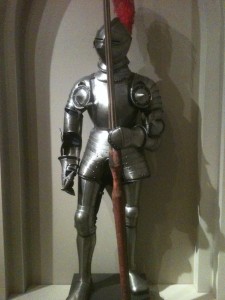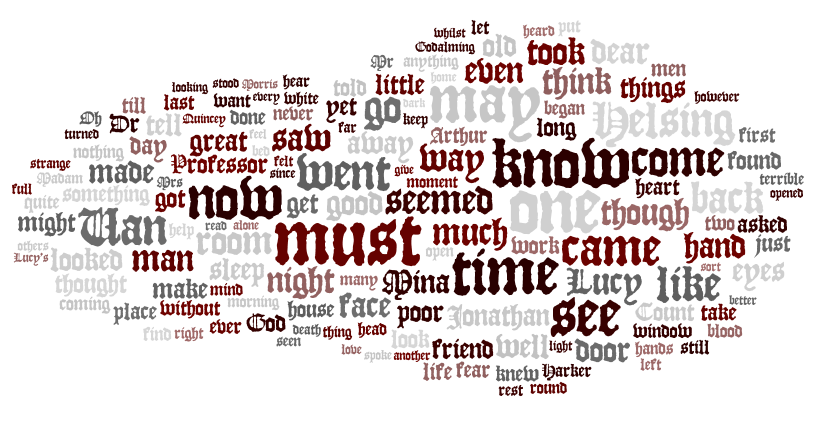Marc Prensky talks of thinking up ways of teaching to digital natives in such a way that makes use of their particular skill set, so I wish to try something of my own.
Last night I gave a talk at the monthly meeting of Watson’s Tin Box, the Sherlock Holmes Society to which I belong. When I was done many of the older members of the group approached me and said that they wished DH had been better established 40 years ago–if it had, they might have stayed in the English Department. While it may be too late to bring them back to the fold, so to speak, the articles we read this week have me wondering what I can do to attract younger crowds to the original Holmes stories–and maybe the society.
In fact, an interesting point became clear last night, that a good many of our newer and younger members were attracted to Holmes not from the novels or short stories, but by the recent films and television shows. It’s really wonderful, but not all fans–particularly children–make the switch from television back to the texts that inspire the show. I fear that to the digital native Victorian London might not hold the same appeal as the BBC’s Sherlockian London of cellphones, texting, blogs, and mile-a-minute modern dialogue.
Every year we run an essay contest for young readers. They read “The Speckled Band” and write about it. This is wonderful, but I’m wondering if there isn’t more we can do–something specific that will appeal to the digital native.
To begin with, while I doubt that we were the first generation to discover that learning can be made fun–Sesame Street was also not the first to stumble upon that idea (I remember my mother had a board game which my brother and I inherited when we were kids based on Captain Kangaroo–a show that was making learning fun more than ten years before Sesame Street). Still, even though Pansky’s essay over simplifies things, I do recognize a lot of the qualities he notes from my own experience. So, whatever the method, it ought to stress things like parallel thinking, random access, entertainment, and user-specified speed. Further, Bogost and Hieronymi, would have us not forget everything old in favor of the shiny new technology. Likewise, I think, in this case it is important to make use of the original text–popular culture will introduce students to Holmes, I want to introduce them to the text in a way that is enjoyable and make them pull the complete Canon from the library shelves in time.
So, perhaps, I can create a game with graphs, links, and perhaps even sound where one can find clues by investigating around the story through hyperlinks, but which still uses the actual text–so we aren’t replacing Holmes, but creating a more entertaining, digital native, way of approaching it for the first time. When the snake of “The Speckled Band” appears (I hope I haven’t spoiled that for anyone), one could offer a link to see that particular type of snake looks like. I would love to create something that is the updated and more faithful version of the Sherlock Holmes books I read as a kid–the cause of my current addiction–which allowed one to solve the original cases in the style of Encyclopedia Brown, with the solutions in the back of the book when you wished to test your theory. Something like this imagined game, I believe, would be a great way to introduce young digital natives to Holmes–and help bridge the gap from fandom to the original texts.
Finally, I’d just like to add that one of the few things I believe from “Don’t Confuse Technology with College Teaching,” I agree that podcasts as the the textbook of the digital age and not the teachers, but that doesn’t meant that the educator can’t fulfill a new–or perhaps it is an old role–as guide rather than lecturer or coach? A sort of Gandolf-like role? I think one of the best examples of ways to teach to digital native comes out of West Nottinghamshire College, where professors used one of my favorite games of to cause students to pull all-nighters to study. Using Neverwinter Nights, which has always allowed one to imagine and create one’s own story (many of which are as good as if not better than the original campaigns), the teachers created a story that demanded math and reasoning skills to progress. My favorite quote from the article comes from one of the designers who complains, “They would come knocking on the staff room door and wouldn’t let us go until we had taught them how to calculate area.” That, for me, is the best evidence to support the idea of transforming teaching styles. I hate math with a passion, but even I would be willing to study a bit harder to try this game out.














 Google’s Ngram Viewer would seem to support this theory. The characters have survived far better than their creators–in fact, Holmes leaps to the forefront from the instant of his creation (Dracula has a bit more of an uphill battle at first). But maybe this is to be expected? Do characters always do better than their creators? If so, let’s test on an undeniably talented author and their beloved creation, Jane Austen and Darcy:
Google’s Ngram Viewer would seem to support this theory. The characters have survived far better than their creators–in fact, Holmes leaps to the forefront from the instant of his creation (Dracula has a bit more of an uphill battle at first). But maybe this is to be expected? Do characters always do better than their creators? If so, let’s test on an undeniably talented author and their beloved creation, Jane Austen and Darcy:
 So clearly, this is not true among all authors and their creations. Austen gives Darcy a run for his money. Now, one must also take into account that Austen published far more texts than Stoker or Doyle. Her’s were also far more popular–anyone heard of or remember The White Company? No? That suggests to me that Doyle’s talent with the written word is not as strong Holmes’s persistance in the memory.
So clearly, this is not true among all authors and their creations. Austen gives Darcy a run for his money. Now, one must also take into account that Austen published far more texts than Stoker or Doyle. Her’s were also far more popular–anyone heard of or remember The White Company? No? That suggests to me that Doyle’s talent with the written word is not as strong Holmes’s persistance in the memory.





